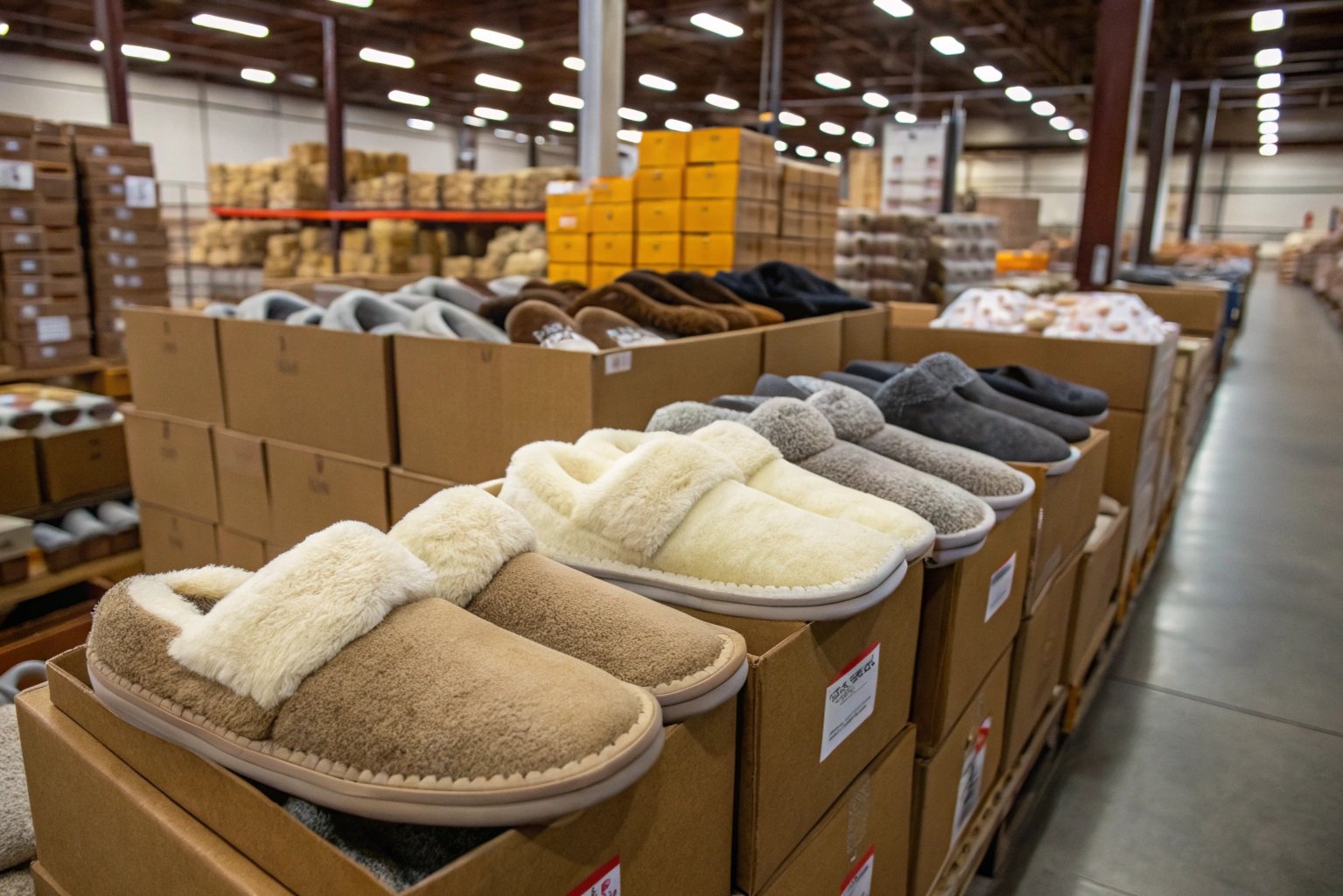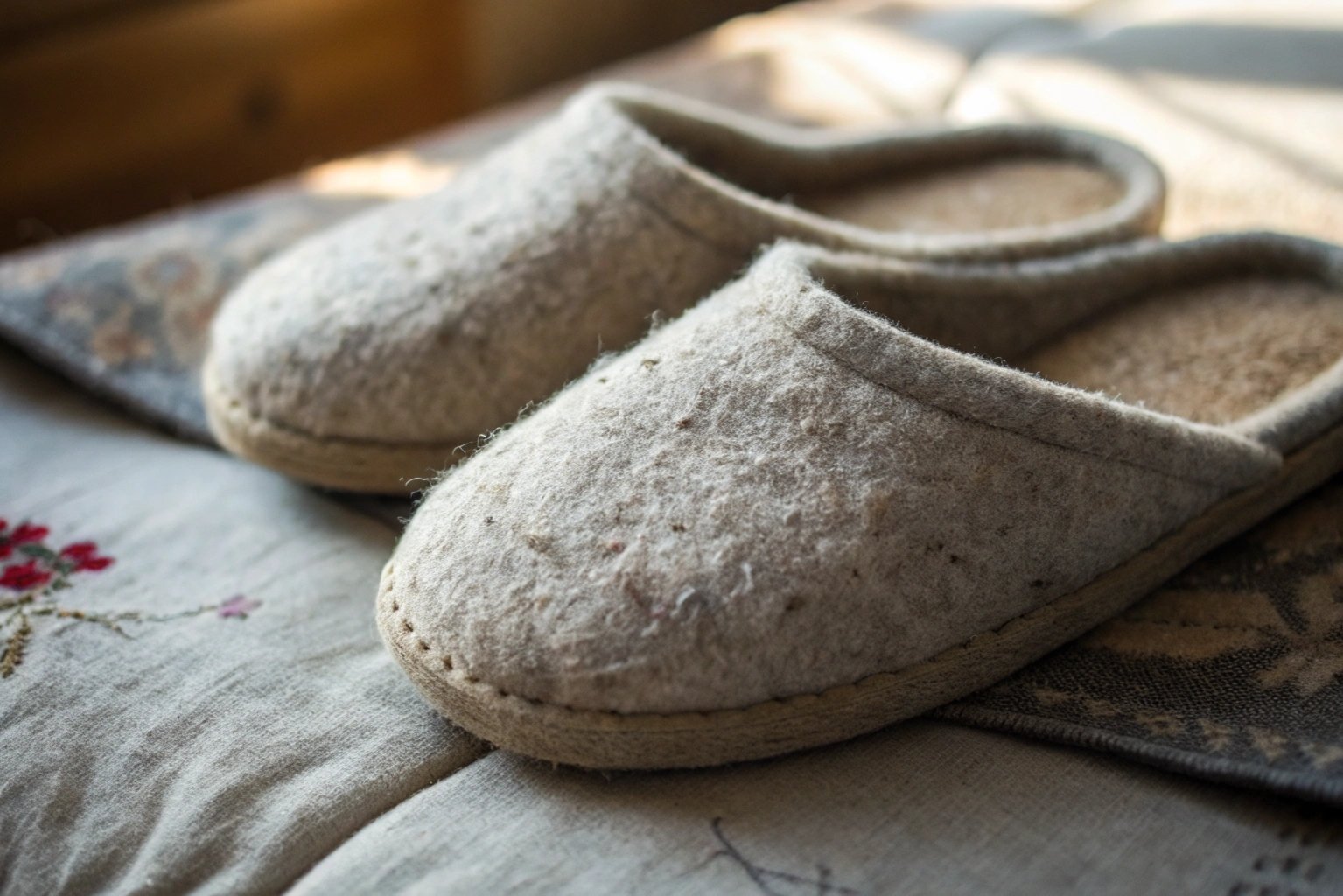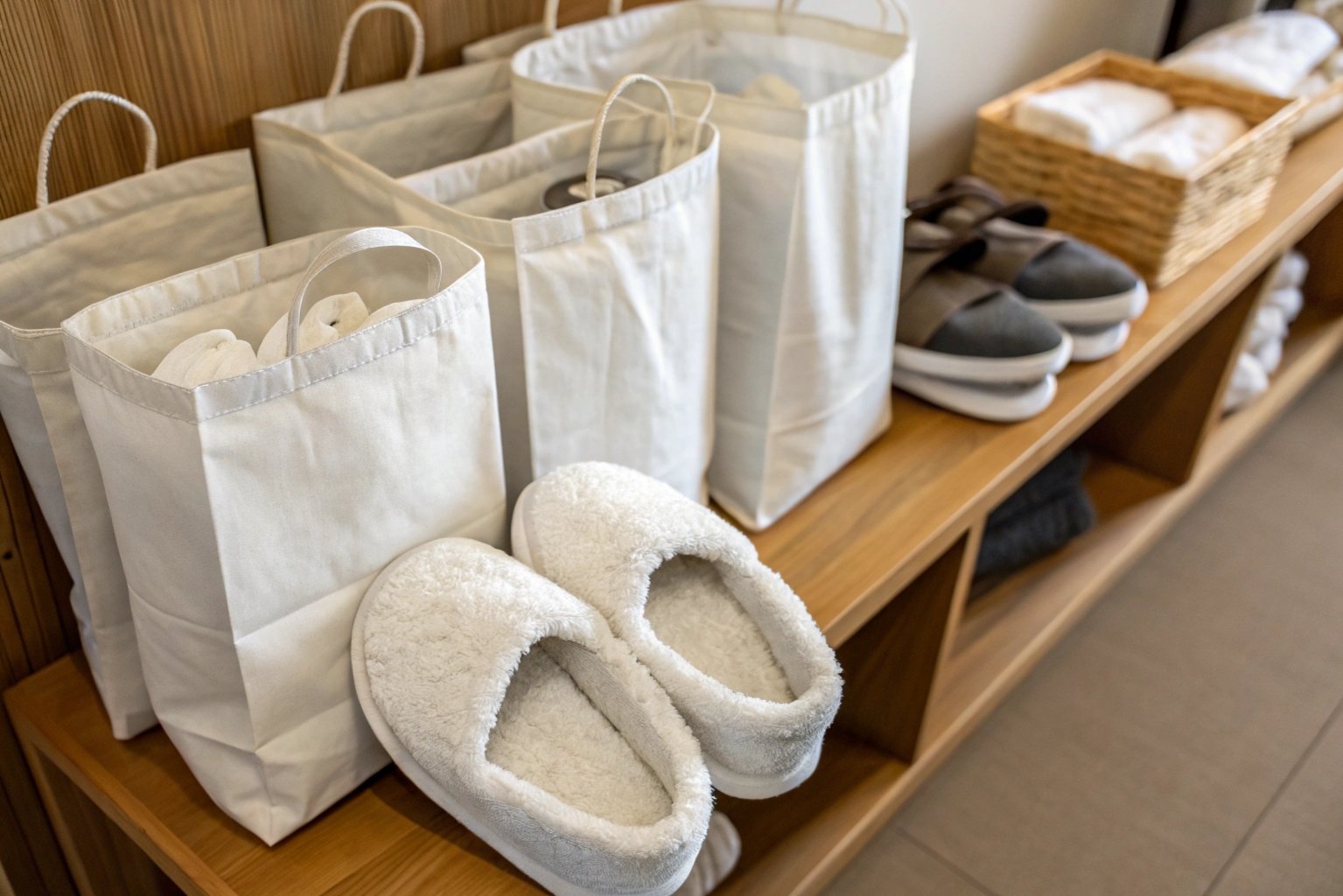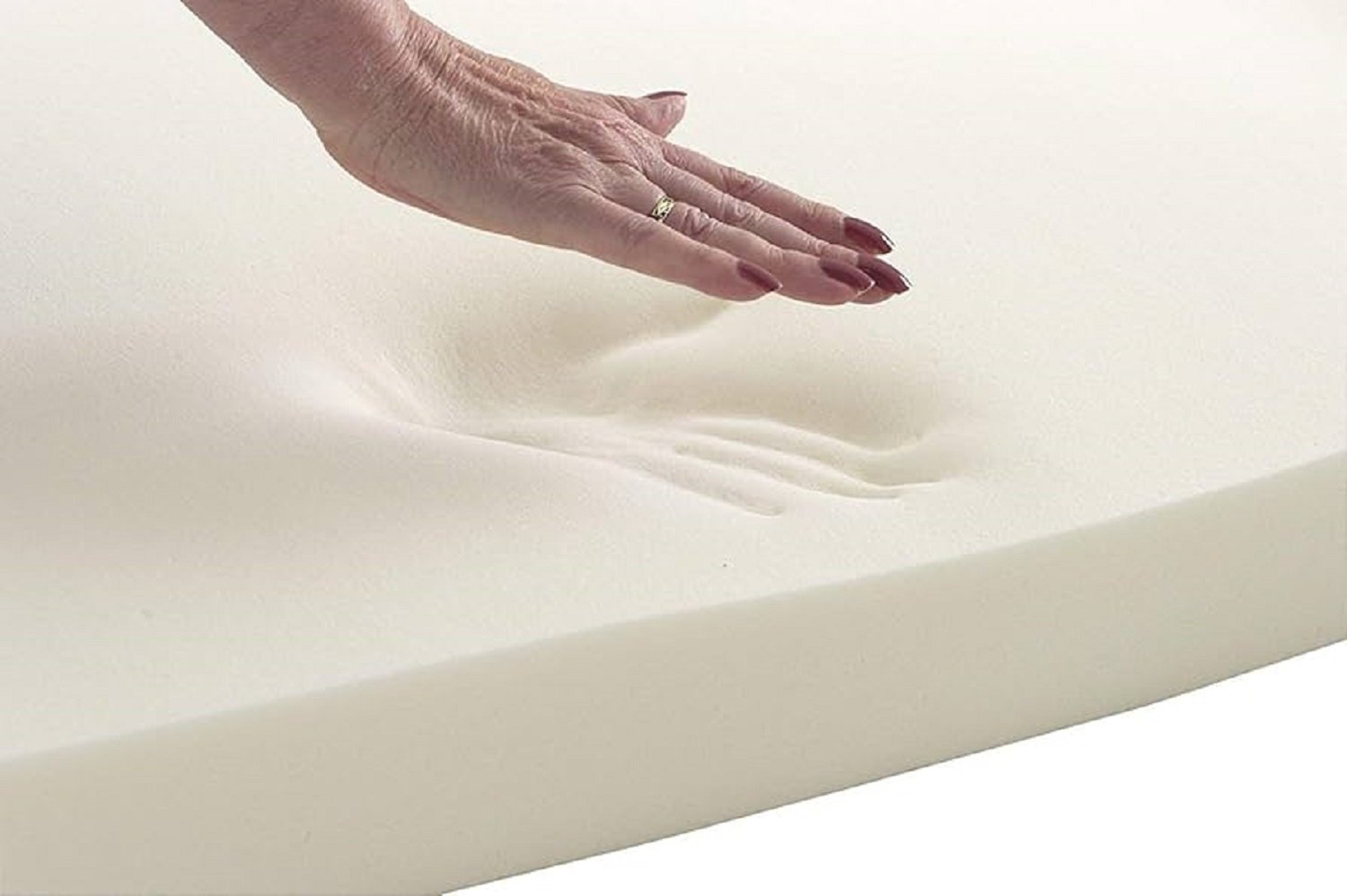Worried about your cozy winter slippers losing their shape while packed away? It’s a common concern!
Winter slippers can collapse during storage if not stored correctly. However, by understanding the causes and taking preventative steps, you can keep your slippers in great condition for the next cold season.

Let’s find out how to prevent that!
What Factors Cause Winter Slippers to Lose Shape in Storage?
Are you wondering what could make your slippers go flat? Let’s find out.
Worried about what makes your slippers lose their form? It’s key to understand the factors.
The main causes include improper packing, material type (some materials are more prone to losing shape), and environmental conditions like humidity and temperature. Pressure from stacking other items on top can also crush slippers.

As a slipper manufacturer, I’ve seen many slippers come out of storage looking worse for wear. So, what exactly happens? The filling materials, like down or foam, can compress over time, especially under weight. Think of it like this: if you leave a heavy book on a pillow for months, the pillow won’t be as fluffy afterwards. The same thing happens to slippers. In addition, if slippers are stored in a damp place, the materials can break down, leading to collapse and even mold growth. I recall one instance where a customer complained that their slippers smelled awful after storage, and it turned out they had been stored in a leaky basement. Also, you want to avoid storing the slippers in direct sunlight, as this can cause the materials to fade and weaken over time, which would lead to degradation of its original form.
How Can I Properly Store My Winter Slippers to Maintain Their Shape?
Want to know the secrets to keeping your slippers perky? Here’s how!
To maintain your slippers’ shape, stuff them with paper or use shoe trees. Store them in a breathable bag or container, away from direct sunlight, humidity, and extreme temperatures. Avoid stacking heavy items on top of them.

I’ve always emphasized the importance of proper storage to my customers. One trick I recommend is to use acid-free tissue paper to stuff the slippers. This not only helps maintain their shape but also absorbs any lingering moisture. Another good practice is to keep slippers in breathable cotton bags rather than plastic bags, since the latter traps moisture. From my experience, I think it’s important to make sure slippers are completely dry before storing them. Sometimes people put away slightly damp slippers, thinking they’ll be fine, but this can create a breeding ground for mold. This is not a good experience. For those with high-end slippers, investing in shoe trees is a great way to ensure they keep their form.
What Are the Best Materials for Winter Slippers That Hold Their Shape Well?
Looking for slippers that last? Certain materials are your best bet!
Slippers made with high-density foam, shearling, or felt tend to hold their shape better than those with cheaper, less resilient materials. Look for slippers with a sturdy construction and well-defined structure.

I’ve learned that the choice of material is just as important as the storage method. For example, EVA plastic slippers are very durable and can withstand compression, making them a great option for those who need slippers that can hold their shape. On the other hand, slippers made with lower-quality materials, like cheap cotton or thin foam, are more likely to flatten out over time. When we are designing slippers for our ODM customers, we always consider the material’s ability to retain its shape. This is because the feel and shape are important factors in quality as perceived by end consumers. For instance, we once created a line of shearling slippers for a brand in the USA, and we used high-quality, dense shearling that not only felt luxurious but also held its shape beautifully even after months of wear and storage.
Conclusion
Proper storage helps keep your winter slippers in great condition, ready for when you need them.

